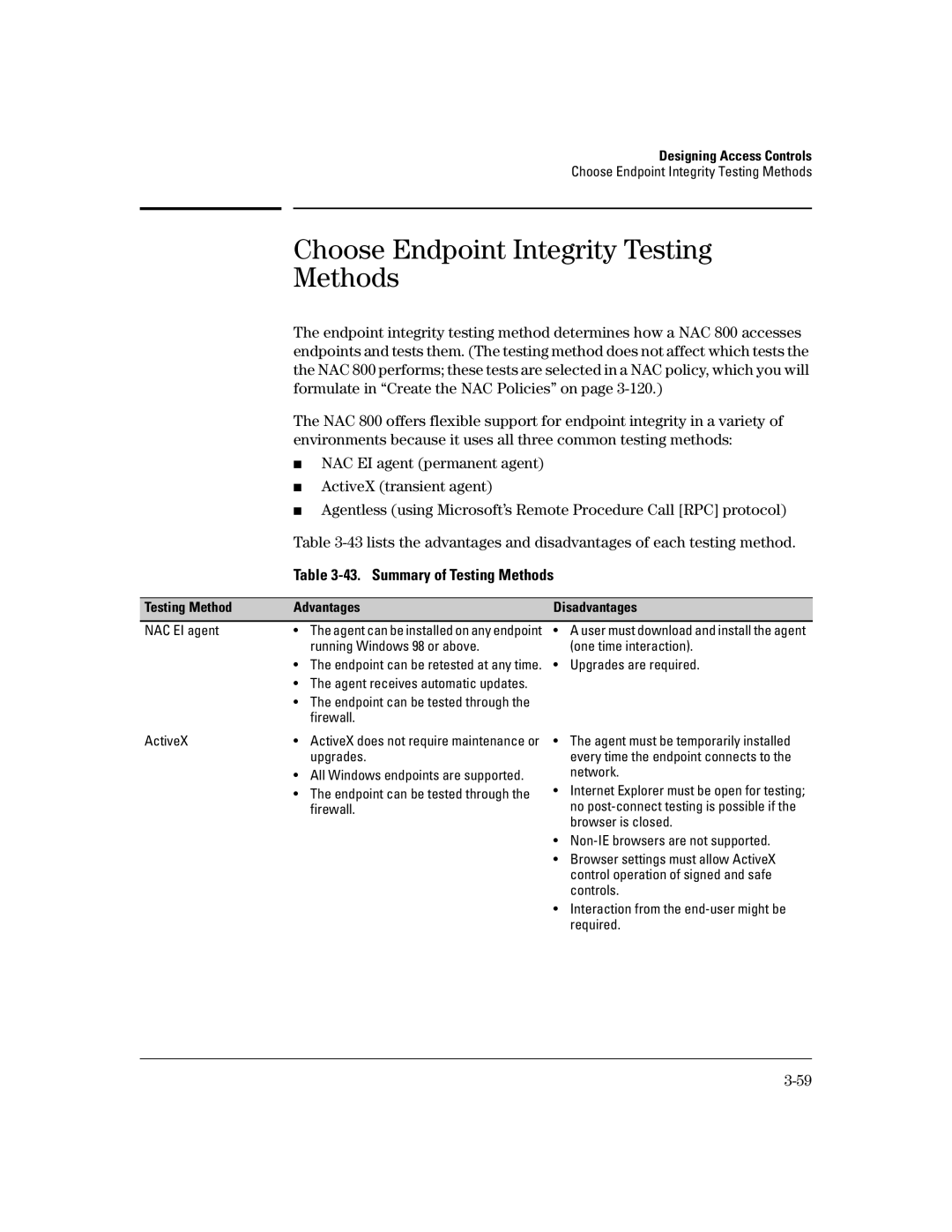
Designing Access Controls
Choose Endpoint Integrity Testing Methods
Choose Endpoint Integrity Testing
Methods
The endpoint integrity testing method determines how a NAC 800 accesses endpoints and tests them. (The testing method does not affect which tests the the NAC 800 performs; these tests are selected in a NAC policy, which you will formulate in “Create the NAC Policies” on page
The NAC 800 offers flexible support for endpoint integrity in a variety of environments because it uses all three common testing methods:
■ NAC EI agent (permanent agent) ■ ActiveX (transient agent)
■ Agentless (using Microsoft’s Remote Procedure Call [RPC] protocol) Table
Table 3-43. Summary of Testing Methods
Testing Method | Advantages | Disadvantages |
NAC EI agent | • The agent can be installed on any endpoint | • A user must download and install the agent |
| running Windows 98 or above. | (one time interaction). |
| • The endpoint can be retested at any time. | • Upgrades are required. |
| • The agent receives automatic updates. |
|
| • The endpoint can be tested through the |
|
| firewall. |
|
ActiveX | • ActiveX does not require maintenance or | • The agent must be temporarily installed |
| upgrades. | every time the endpoint connects to the |
| • All Windows endpoints are supported. | network. |
| • The endpoint can be tested through the | • Internet Explorer must be open for testing; |
| firewall. | no |
|
| browser is closed. |
|
| • |
|
| • Browser settings must allow ActiveX |
|
| control operation of signed and safe |
|
| controls. |
|
| • Interaction from the |
|
| required. |
